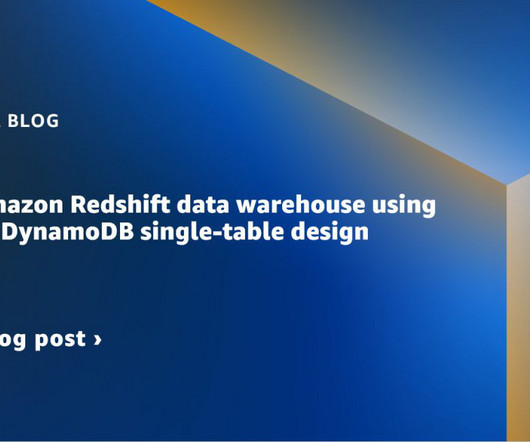Build an Amazon Redshift data warehouse using an Amazon DynamoDB single-table design
AWS Big Data
JUNE 21, 2023
In traditional databases, we would model such applications using a normalized data model (entity-relation diagram). Deriving business insights by identifying year-on-year sales growth is an example of an online analytical processing (OLAP) query. These types of queries are suited for a data warehouse.
















Let's personalize your content